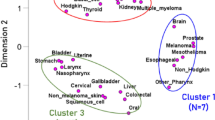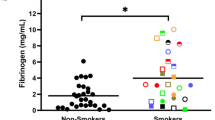Abstract
A double-blind trial of the tanned-erythrocyte electrophoretic mobility test for cancer has been carried out. This included 70 normal subjects as controls, 61 subjects with disease other than cancer, and 229 cancer patients. Slowing values generally increased in the order given, with certain diseases having values within the range positive for cancer. Exposure to viral infection also tended to produce false positives. Slowing values above 50%, however, appear to be definitely associated with cancer. For the middle range of slowing values (25-50%) there is some overlap between the 3 groups, so that a statistical probability of the presence of malignancy is available from the test. With slowing values below 25% there is little likelhood of cancer. Tumour type influences the test result, as does, to a lesser extent, tumour bulk.
This is a preview of subscription content, access via your institution
Access options
Subscribe to this journal
Receive 24 print issues and online access
$259.00 per year
only $10.79 per issue
Buy this article
- Purchase on Springer Link
- Instant access to full article PDF
Prices may be subject to local taxes which are calculated during checkout
Similar content being viewed by others
Rights and permissions
About this article
Cite this article
Dyson, J., Watkinson, A., Jones, W. et al. Lymphocyte supernatants and the electrophoretic mobility of erythrocytes: further experience of cancer diagnosis. Br J Cancer 42, 448–454 (1980). https://doi.org/10.1038/bjc.1980.257
Issue Date:
DOI: https://doi.org/10.1038/bjc.1980.257



